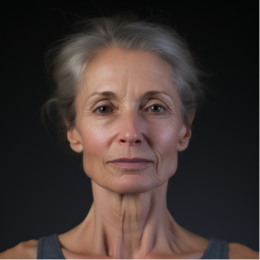How to Treat Seasonal Affective Disorder: More Than Just “Winter Blues”

Ah, winter! The season of hot cocoa, snow angels, and… seasonal affective disorder? Unfortunately, yes. While winter brings many joys, it also comes with its own set of blues—literally. Seasonal affective disorder (SAD) affects about 5% of Americans every year, with women more likely to be diagnosed than men. But here’s some good news: you’re not alone, and there are solutions.
Meet Sarah, a busy mom of two. She loved summer activities like camping, bike riding, and gardening, but when winter arrived, her energy levels plunged. She felt lethargic and moody and struggled to keep up with her usual responsibilities. Sound familiar? Let’s explore how to help Sarah—and maybe you, too—get through this season more joyously.
What Are the Symptoms of Seasonal Affective Disorder?
First off, let’s clarify what SAD looks like:
- Persistent Low Mood: A sadness that lingers and colors your entire day.
- Lack of Interest: Activities that usually excite you might seem less appealing.
- Increased Appetite: Particularly for carbohydrates. It’s like the fridge is calling your name!
- Sleep Issues: Either you can’t get enough sleep, or you find it hard to get out of bed.
- Difficulty Concentrating: Simple tasks suddenly require Herculean effort.
When Does Seasonal Affective Disorder Start?
SAD usually kicks in as the days get shorter and the weather cooler, around late fall and throughout the winter. As for Sarah, her mood started changing around late October. By Thanksgiving, she knew it wasn’t just “holiday stress” but something more profound.
Statistics:
- About 20% of SAD cases manifest in late fall.
- Women are four times more likely to be affected by SAD than men.
- The majority of SAD patients are between the ages of 18 and 30.
What Causes Seasonal Affective Disorder?
Several factors contribute to SAD, such as
- Reduced Sunlight: Less daylight can throw off your internal body clock, affecting your sleep-wake cycle.
- Serotonin Imbalance: This neurotransmitter, crucial for mood regulation, dips when sunlight exposure is minimal.
- Melatonin Overproduction: This hormone, which helps you sleep, may be produced in excess, leading to feelings of lethargy and depression.
Quick Poll
How to Treat Seasonal Affective Disorder?
Tackling SAD requires a multi-pronged approach. Here are the options:
Light Therapy
The most recommended light therapy involves sitting in front of a special light box that mimics natural sunlight for about 20 to 30 minutes daily. Sarah purchased a light box and started her days with a light therapy session while drinking her morning coffee. Within a week, she noticed that her mood had lifted.
Medication
Anti-depressants like selective serotonin reuptake inhibitors (SSRIs) are commonly prescribed for SAD. However, please consult your healthcare provider for a diagnosis and prescription tailored to you.
Cognitive Behavioral Therapy
Also known as “talk therapy,” it focuses on changing negative thought patterns and behaviors. Sarah tried this in tandem with light therapy, finding it helpful to have someone to talk through her struggles.

How to Ease Seasonal Affective Disorder?
In addition to clinical treatment options, there are lifestyle changes that can significantly help in easing the symptoms.
Exercise
Physical activity can be a mood booster. Even a 10-minute walk each day can help. For Sarah, getting out for a brisk walk with her dog became a cherished daily ritual.
Social Support
Don’t underestimate the power of a good chat with friends or family. Sarah found that a regular video call with her best friend made her feel more connected and happier.
Diet
Eating a balanced diet rich in vitamins and nutrients can help regulate mood. Sarah switched from carb-heavy comfort foods to a diet rich in fruits, vegetables, and lean proteins, and she noticed a positive change in her mood.
Conclusion
Seasonal Affective Disorder is a condition that you don’t have to weather alone or in silence. There are effective, scientifically-backed treatments that can help you reclaim your life and happiness, even when the skies are gray.
PLEASE SHARE YOUR EXPERIENCE AND THE COMMENTS BELOW SO WE CAN HELP EACH OTHER WITH THE KNOWLEDGE YOU HAVE GAINED.
References
- Mayo Clinic. Seasonal Affective Disorder (SAD).
- American Psychological Association. Seasonal Affective Disorder.
- National Institute of Mental Health. Seasonal Affective Disorder.





